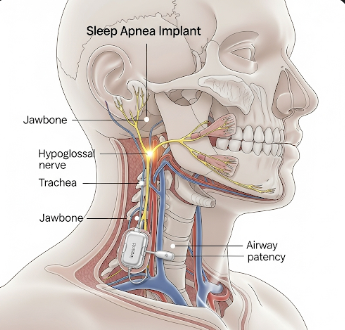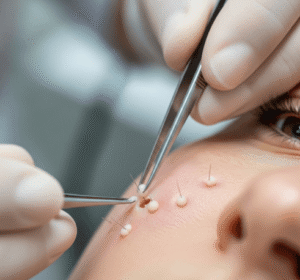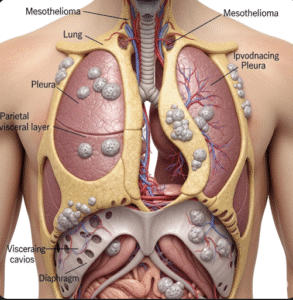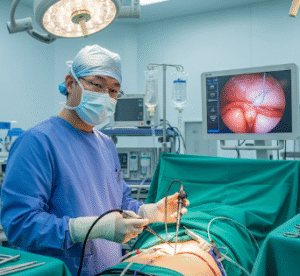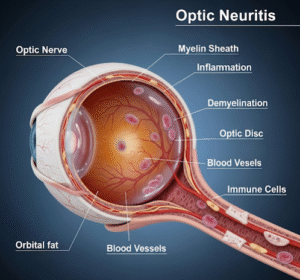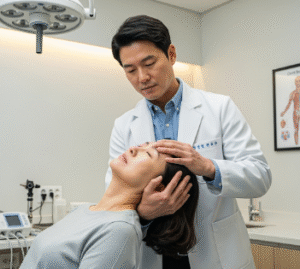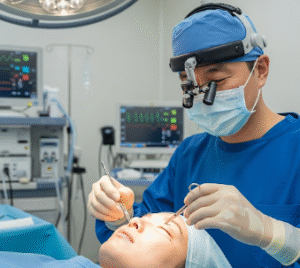Overview
Sleep apnea implants are an advanced treatment option for patients with obstructive sleep apnea (OSA) who cannot tolerate continuous positive airway pressure (CPAP) therapy. These implants are small, pacemaker-like devices placed under the skin of the chest and connected to nerves that control the tongue or airway muscles. They help keep the airway open during sleep by stimulating these muscles in rhythm with breathing.
Korea has become a leading destination for this procedure, offering cutting-edge surgical techniques, specialized sleep clinics, and internationally accredited hospitals. Patients who struggle with CPAP or other therapies often find life-changing results with sleep apnea implants in Korea.
What is a Sleep Apnea Implant?
A sleep apnea implant is a surgically implanted device designed to treat moderate to severe obstructive sleep apnea. The most common type is hypoglossal nerve stimulation (HNS), where the device sends mild electrical pulses to the hypoglossal nerve, which controls tongue movement.
This stimulation prevents the tongue and throat muscles from collapsing during sleep, thereby maintaining an open airway and reducing apnea events. Unlike CPAP, which is external and often uncomfortable, the implant is discreet, comfortable, and effective long-term.
What are the Benefits?
Patients who undergo sleep apnea implant surgery can experience several significant benefits:
✅ Improved sleep quality with fewer apnea episodes.
➤ Better compliance compared to CPAP therapy.
✦ Daytime energy boost – reduced fatigue, improved focus.
➤ Lower risk of complications related to untreated OSA (hypertension, heart disease, stroke).
✅ Discreet and comfortable – no mask, hoses, or noise.
✦ Long-term effectiveness with durable implant technology.
➤ Better overall health – improved oxygen levels and heart function.
Procedure Details
1) How should I prepare for Sleep Apnea Implant surgery?
Preparation usually involves:
- ✦ Diagnostic sleep study – to confirm the severity of sleep apnea.
- ➤ Airway evaluation – sometimes with endoscopy to check throat anatomy.
- ✦ Trial of CPAP – to ensure implant is considered only if CPAP is intolerable.
- ➤ Pre-surgical medical check – blood tests, heart tests, and anesthesia evaluation.
- ✦ Medication review – stopping blood thinners or adjusting drugs before surgery.
- ➤ Pre-op fasting – avoiding food or drink for 6–8 hours before surgery.
2) What happens during the procedure Sleep Apnea Implant?
The surgery usually lasts 2–3 hours and is performed under general anesthesia. Steps include:
➤ Step 1: A small incision is made in the upper chest to place the implantable pulse generator (IPG).
✦ Step 2: A stimulation lead is attached to the hypoglossal nerve, which controls tongue movement.
➤ Step 3: A sensing lead is positioned near the ribs to detect breathing patterns.
✦ Step 4: The leads are connected to the generator, which coordinates stimulation with breathing.
➤ Step 5: The incisions are closed with sutures, and the device is programmed for initial testing.
3) What happens after a Sleep Apnea Implant?
After surgery, patients will:
- ✦ Stay in the hospital overnight for monitoring.
- ➤ Have mild discomfort or swelling at the incision site.
- ✦ Resume light activity in a few days, avoiding strenuous work for 2–3 weeks.
- ➤ Return for device activation after about 4–6 weeks (to allow healing).
- ✦ Undergo a sleep study with device activation to fine-tune settings.
- ➤ Continue regular follow-ups to monitor effectiveness and adjust programming.
Most patients see dramatic improvements in sleep apnea symptoms within weeks of activation.
Risks / Benefits
Possible risks include:
- ✦ Infection at the implant site.
- ➤ Temporary tongue weakness or tingling.
- ✦ Swelling, bleeding, or discomfort around the surgical area.
- ➤ Device malfunction (rare).
- ✦ Need for battery replacement every 7–10 years.
Major benefits include:
- ✅ Long-term, reliable treatment for OSA.
- ✅ High patient satisfaction compared to CPAP.
- ✅ Significant reduction in apnea events.
- ✅ Better cardiovascular health outcomes.
Recovery and Outlook
Recovery is generally smooth, with most patients:
- ➤ Returning to daily activities within 1–2 weeks.
- ✦ Having their device activated about a month after surgery.
- ➤ Experiencing improved sleep and fewer apnea episodes immediately after activation.
- ✦ Achieving long-term benefits – studies show a 70–85% reduction in apnea events.
- ➤ Living normally with no visible signs of the implant.
The outlook is excellent, particularly for patients who cannot tolerate CPAP therapy.
When To Call the Doctor
Patients should contact their doctor if they notice:
⚠ Severe pain or swelling at the implant site.
⚠ Fever or signs of infection.
⚠ Difficulty speaking, swallowing, or moving the tongue.
⚠ Persistent shortness of breath or worsening apnea symptoms.
⚠ Malfunction or unusual sensation from the device.
Best Korea Option / Process
Korea is at the forefront of sleep medicine and advanced implant surgery. Advantages include:
- ✦ World-class ENT and sleep surgery specialists with international training.
- ➤ Advanced sleep laboratories for accurate diagnosis and device programming.
- ✦ Minimally invasive surgical techniques with excellent safety records.
- ➤ Affordable packages compared to the U.S. or Europe.
- ✦ Strong follow-up care including device adjustments and long-term monitoring.
- ➤ Hospitals equipped with robotic surgical systems and AI-based sleep study tools.
This makes Korea one of the best destinations for patients seeking cutting-edge sleep apnea treatment with implants.
Highlights of Sleep Apnea Implant in Korea
- ✅ Breakthrough treatment for moderate to severe OSA.
- ➤ Ideal for patients intolerant to CPAP therapy.
- ✦ Performed by leading Korean ENT and sleep specialists.
- ➤ Quick recovery and long-term effectiveness.
- ✅ Affordable and high-quality healthcare packages.

